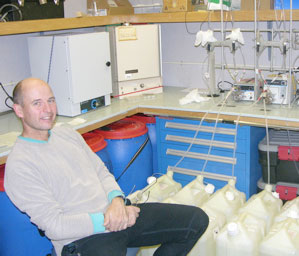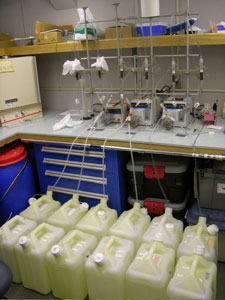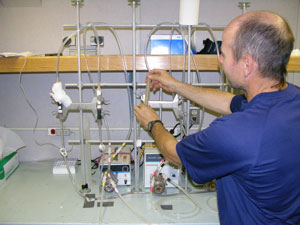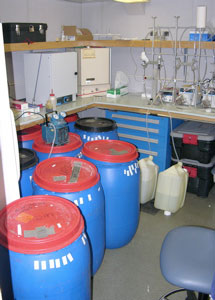Rick Nelson, Ocean Research and Monitering Section, Bedford Institute of Oceanography, CanadaAugust 24, 2007
The direct intrusion of water from the North Atlantic along the continental margin of the Eurasian Basin into the Canada Basin carries elevated inventories of the radioactive tracers Iodine (I-129) and Cesium (Cs-137), which have been released in large quantities during the past 30 years from the nuclear fuel reprocessing plants at Sellafield, U.K. and La Hague, France. Changes in the release ratios of I-129 and Cs-137 are propagating through the Norwegian and Atlantic currents into the marginal seas and interior of the Arctic Ocean on time scales of 4 to 5 years. There are two basic applications for the measurements of I-129 and Cs-137 in the Arctic: separately they provide evidence for the origin of the water labelled by discharges from European reprocessing plants, and together they can be used to match the observed ratio on a given year of transport through the Norwegian Coastal Current (NCC), thereby permiting the determination of a transit time from the NCC to the sampling location. As with most tracers, each one is a little hard to interpret, but the picture gets clearer when you put everything together.
Last updated: October 7, 2019 | |||||||||||||||||||||||
Copyright ©2007 Woods Hole Oceanographic Institution, All Rights Reserved, Privacy Policy. | |||||||||||||||||||||||






